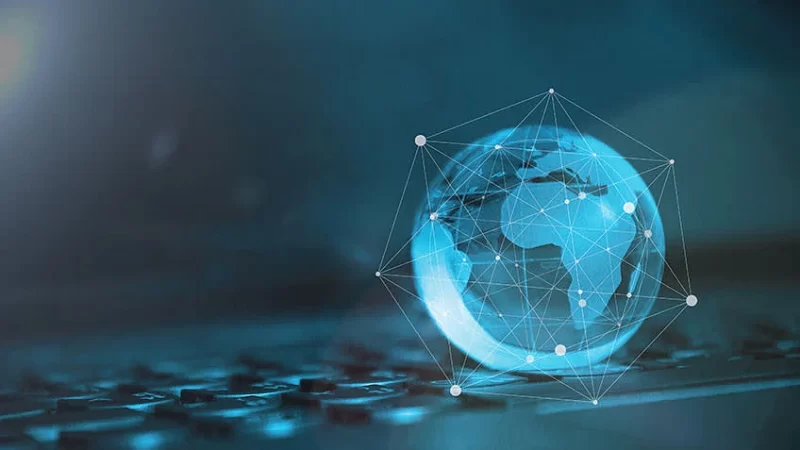The Relevance Of Decentralised Systems For Web 3.0: Dinis Guarda Interviews Bill Laboon

Categories :
The world today stands on the cusp of a new era: a decentralised internet called Web 3.0. This era challenges the long-standing centralised systems that are centuries old, and stand no relevance in the digitalised world of today. Bill Laboon, the Head of Education and Grants at the Web3 Foundation, explains the features of decentralised systems in Dinis Guarda YouTube podcast, that make it democratic and transparent at the same time.
The concept of digitalisation is poised for a significant overhaul, with a focus on enhancing security, respecting privacy, and ensuring portability. Historically, the internet was not inherently designed with a robust digital identity framework, resulting in a scenario where companies established isolated relationships with individual users. This approach led to the proliferation of separate user accounts, each housed within central databases controlled by different entities. Unfortunately, this fragmentation has heightened the vulnerability to security breaches and privacy infringements.
During the interview with Dinis Guarda, Bill Laboon speaks about the challenges that arise when the ultimate decision power is in the hands of a central identity, the centralised systems.
He explains that the mere digitisation of existing business processes or physical identification methods does not mitigate these risks. What we require is a comprehensive identity system that consolidates our digital personas, places ownership squarely in the hands of individuals, and enables the seamless, trustworthy, and secure portability of digital identities.
What is meant by the decentralised nature of Web 3.0?
Web 3.0 represents a paradigm shift in the architecture of the internet. Unlike its centralized predecessors, Web 3.0 operates on decentralised networks, most notably blockchain technology. This decentralised structure removes the need for intermediaries like traditional banks, social media giants, and e-commerce platforms. Instead, individuals have direct control over their data, assets, and interactions.
Speaking about the decentralised nature of blockchain technology, experts Bill and Dinis discussed that for a world that has grappled with the challenges of centralised systems, blockchain was a solution that gave authority to the users. Bill said:
“In any political system, there is always a tension between centralisation and decentralization. What we can see is that centralized entities can get things done much more quickly and they are very strong in the short run. But that’s a recipe for tyranny and stagnation in the long run.”
Polkadot: Creating a decentralised infrastructure with Web3 Foundation
One of the fundamental changes introduced by Web 3.0 is the concept of decentralisation. Instead of relying on a single central authority, information and assets are distributed across a network of nodes. This democratises access and control, fostering a more equitable digital landscape. In Web 3.0, users have ownership of their digital identities and can seamlessly transfer assets between virtual environments. This shift empowers individuals, enabling them to collaborate, create, and transact freely without the limitations of centralised gatekeepers.
Bill explained to Dinis that Web3 Foundation has numerous researchers and collaborators who have developed Polkadot OpenGo that allows the community to be enacted by the network automatically. He also said that the Polkadot protocol doesn’t really allow forks, so when a decision is made, the entire chain moves forward with it.
“This makes our system very autonomous, that’s very democratic as well as powerful. So, we get the many benefits of centralized decision making without having a centralized decision maker, where our system allows us to evolve. If we feel that our system is not meeting our needs, we really can vote in for a new system”, he said.

Hernaldo Turrillo is a writer and author specialised in innovation, AI, DLT, SMEs, trading, investing and new trends in technology and business. He has been working for ztudium group since 2017. He is the editor of openbusinesscouncil.org, tradersdna.com, hedgethink.com, and writes regularly for intelligenthq.com, socialmediacouncil.eu. Hernaldo was born in Spain and finally settled in London, United Kingdom, after a few years of personal growth. Hernaldo finished his Journalism bachelor degree in the University of Seville, Spain, and began working as reporter in the newspaper, Europa Sur, writing about Politics and Society. He also worked as community manager and marketing advisor in Los Barrios, Spain. Innovation, technology, politics and economy are his main interests, with special focus on new trends and ethical projects. He enjoys finding himself getting lost in words, explaining what he understands from the world and helping others. Besides a journalist, he is also a thinker and proactive in digital transformation strategies. Knowledge and ideas have no limits.








